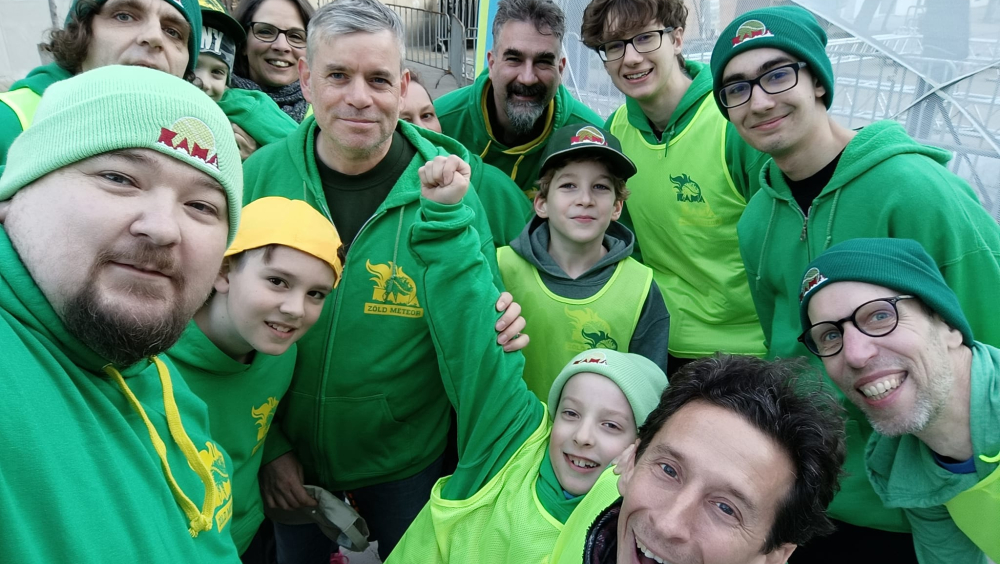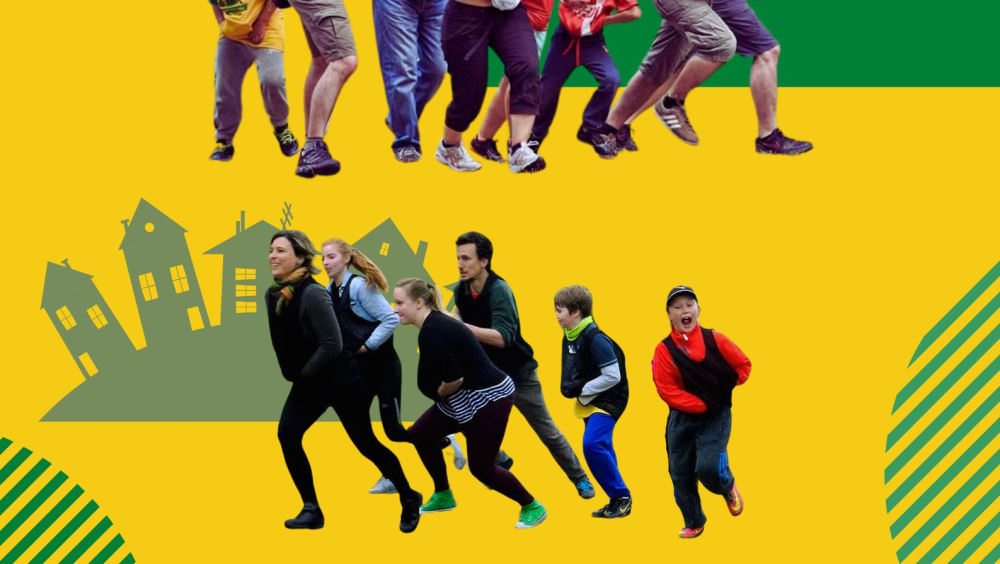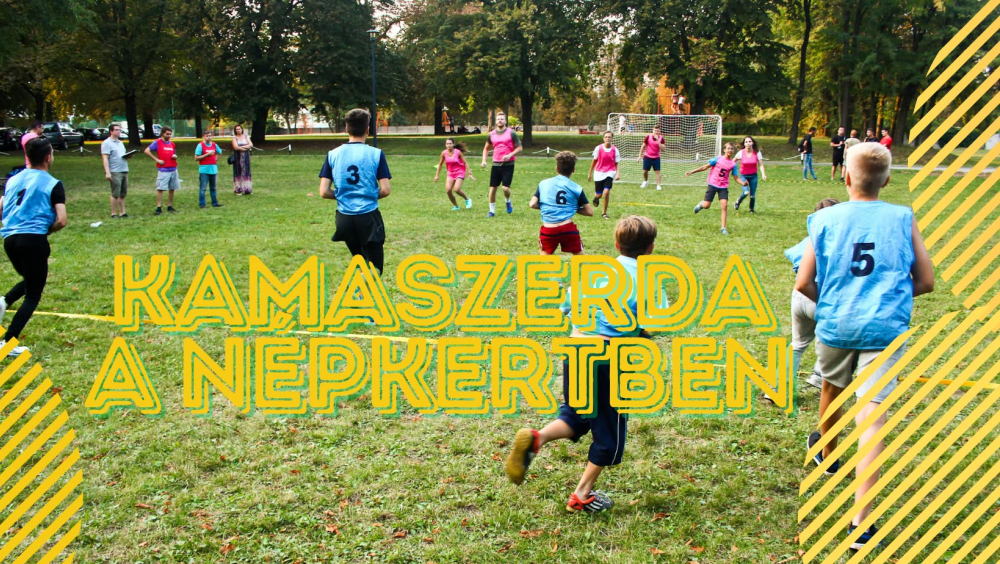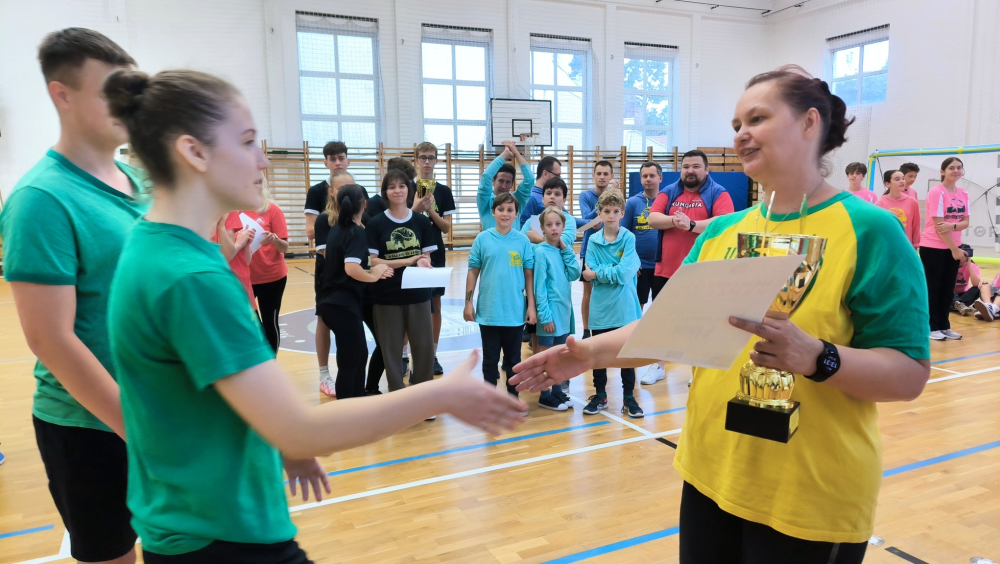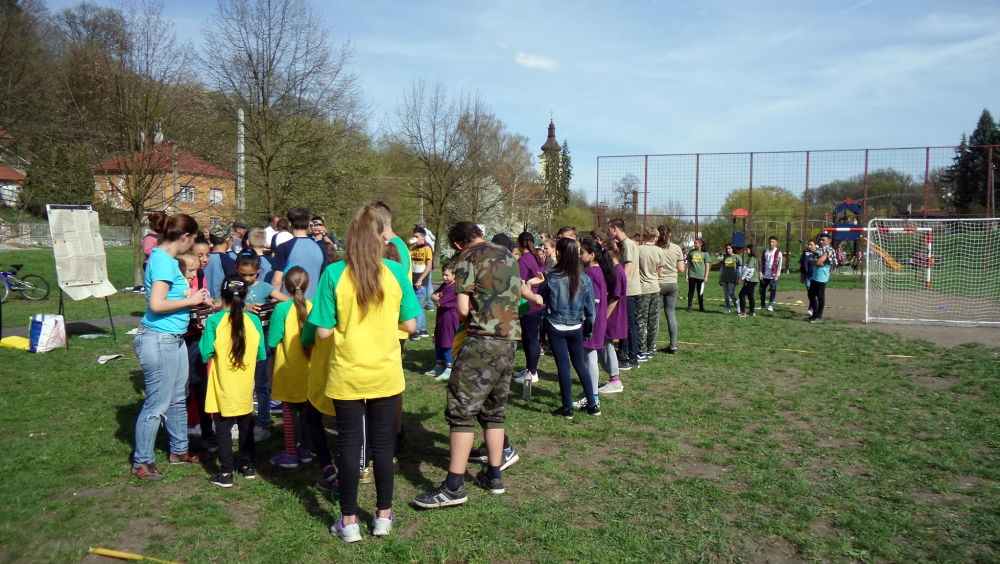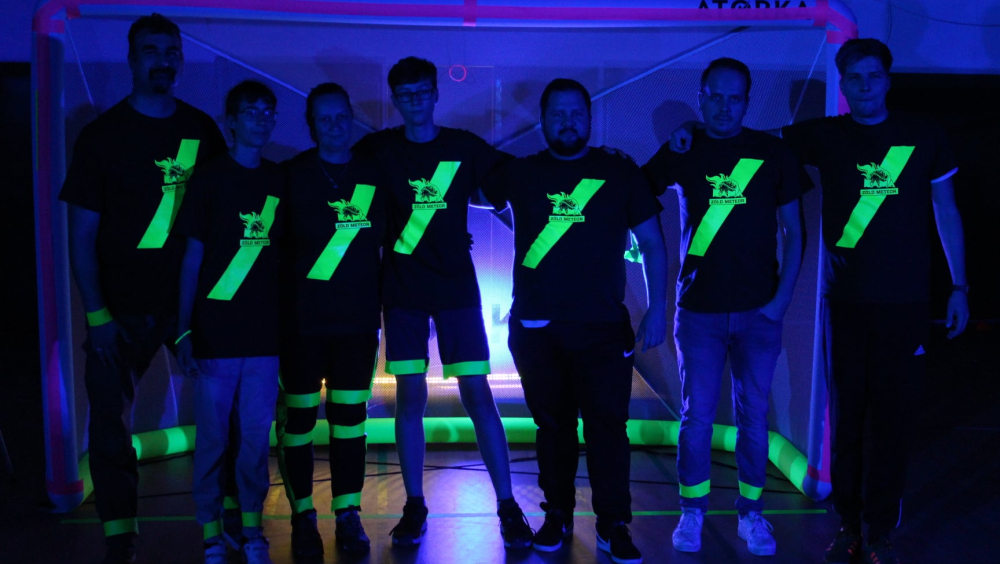Kama, or "pouch ball"
Twelve years ago, we launched a complex program called KAMA, which combined community, cultural, and environmental goals. The name was initially just a catchy acronym related to our "Kertek Alatt Festival." But it also evoked childhood memories: a small-ball team game that almost everybody growing up in Miskolc fondly remember. By the 2000s, the game had nearly disappeared and was largely forgotten.
While this project didn’t focus specifically on the kama game, one of its elements was the collection and revival of traditional community games. We issued a call to gather kama rules and, in 2014, organized a flash mob in a city square, playing kama for the first time since our childhood. The realization was shocking: kama was virtually unknown outside Miskolc! Our research uncovered a few traces linking it to other cities, but they all led back to Miskolc.
This experience was so significant that we decided to organize the first age-group kama championship, followed by the first open Kama Cup. Since then, kama has been officially recognized as part of the local cultural heritage and included in the Local Value Repository. We also organized several international events, and this year, our independent kama sport association celebrates its ninth anniversary!
Our work revolves around cultural heritage, local built and oral cultural values. Our repertoire includes social history researches, exhibitions, educational publications, picture books, value repositories, book launches, cultural festivals, local heritage camps, workshops, interactive quizes, city tours, cultural adventure games, websites, blogs, and 3D architectural animations. Initially, kama as a sport seemed somewhat extraneous in our activities. However, it highlights the diversity of this unique cultural heritage, being simultaneously a sport and a community game that can serve as a tool integrating boys and girls, different age groups, and social backgrounds – and even as a drug prevention method
Our Commitment to Cultural Heritage and Local Values
Engaging with cultural heritage and local built and oral cultural values, the Észak-Keleti Átjáró Egyesület (North-Eastern Passage Association) has taken on numerous local initiatives, such as:
- Revitalization of industrial heritage,
- Restoration of the Avas Lookout Tower—a modernist building that once served as a city symbol—and the neglected Avas wine cellars,
- Promotion of local cultural and historical topics, including the youth TV series Utánam, srácok! and other Miskolc-related films and literary works.
The Mission of the North-Eastern Passage Association
The Association aims to foster cultural and scientific life in the northeastern Hungarian region, particularly in rural areas and cities such as Miskolc, to create connections with surrounding regions, providing passageways between cultural spaces divided by borders, all in the spirit of Central European identity.
Our goal is to provide local residents with broad access to high-quality artistic, cultural, and scientific events. To achieve this, we organize various programs in the scope of local knowledge and history – including community-development and social integration initiatives, researches, exhibitions, publications, workshops, camps, and festival programs—primarily within youth and volunteer projects. Additionally, we work to preserve local cultural heritage and promote industrial revitalization.
At the same time, we aim to shape public opinion and strengthen local identity by highlighting the importance of one's hometown, positive social values, environmental consciousness, and respect for the wider community.
Our association has always worked toward redefining Miskolc’s identity, challenging negative stereotypes about the city, researching its recent past, and uncovering and presenting its cultural heritage.
Recognitions and Awards
Our efforts have been recognized on multiple occasions:
- 2014: Europa Nostra Grand Prize (EU Prize for Cultural Heritage) in education, training, and awareness-raising,
- 2015: Miskolc’s Civil Organization of the Year award from the Municipality of Miskolc,
- 2017: City Marketing Diamond Award for our kama project,
- 2023: Szemere Bertalan Public Life Award, recognition at the Tied & Bound book design competition during the Hungarian Book Week, and a Tourism-Community Work Commemorative Plaque,
- 2024: NIOK Civil Award in the Best Local Product category.
Kama: The Sport of Miskolc
One of our most significant cultural preservation efforts has been the revival and promotion of kama, a traditional Miskolc-based team sport. Thanks to our initiative, kama was included in Miskolc’s Local Value Repository in 2016.
Our goals for kama:
- Reviving and popularizing the game to prevent its disappearance,
- Raising awareness of its local specificity (as it was only known in Miskolc and its surroundings),
- Strengthening local identity by recognizing kama as an integral part of cultural heritage,
- Developing kama as an independent sport, as it is suitable for different ages and genders to play together,
- Standardizing and disseminating its rules, which had never been formally documented before
- Conducting research through oral history interviews and surveys (e.g., creating a Kama Map, publishing online questionnaires, issuing press calls).
Kama is unique not only because it is a sport exclusive to Miskolc but also because its gameplay mechanics—such as catching and concealing the ball—make it engaging for a broad audience. In fact, no other known team sport in the world involves a defensive team that does not know where the ball is.
Our long-term goal is to introduce kama internationally. We promote it both as a unique local value (a folk game specific to a single city) and as an exciting, easily learnable community sport with global appeal.
We have already presented kama at various national events, including camps and festivals (e.g., Sziget Festival). We have started the process of recognizing kama as a national heritage value (Hungarikum) through a 2018–2019 application program. We introduced the game internationally to groups such as Finnish Waldorf students, international Lions Club volunteers, Slovak high school students, and a Belgian civil organization. We hosted international kama championships in Miskolc, Rožňava (Slovakia), Satu Mare (Romania), and Wrocław (Poland). Through Erasmus+ Sport projects we could expand kama’s presence to cities such as Kraków (Poland), Subotica (Serbia), and Cluj-Napoca (Romania).
We have actively involved diverse groups in playing kama, including students, mixed-gender and mixed-age participants (e.g. workplace teams, civil organizations). It quickly became evident that kama is a successful community game, attracting even those who do not typically engage in sports.
Kama as an Integration Tool
Beyond being a sport, kama has proven effective as a tool for social integration. Students from our tanoda (a support program for disadvantaged and Roma youth) have embraced the game, playing together regardless of gender, age, or background. It has also gained recognition among teachers, parents, partner organizations, even serving as a method of drug prevention through sports and community engagement.
The Unique Appeal of Kama
Kama is a complex sport that combines throwing, catching, strategic deception, and goal-scoring. Despite its depth, it is easy to learn and requires minimal equipment, making it accessible to players from diverse social and cultural backgrounds.
For many Miskolc residents, kama holds nostalgic value, evoking childhood memories. This emotional connection has led to widespread local support for its revival.
A Holistic Approach
Our work with kama is multifaceted:
- Cultural preservation: Researching, documenting, and safeguarding kama as an important—yet previously overlooked—element of Miskolc’s cultural heritage,
- Sport development: Establishing kama as a formal sport with standardized rules,
- Community engagement: Promoting kama as a social game that fosters cohesion,
- Integration and education: Using kama as a tool for inclusivity and identity-building.
Through interviews, surveys, and research, we uncover new knowledge that supports kama’s transition into a recognized sport while also promoting healthy lifestyles and social engagement.
Additionally, kama contributes to improving the quality of life for local residents by reinforcing positive identity factors.
Beyond cultural and applied anthropology, we incorporate community development, education, physical education, and marketing strategies to elevate kama’s status. This process involves experts from various fields and relies on both planned strategies and spontaneous community-driven growth.
Through this unique and comprehensive approach, we are working to secure kama’s place as a cherished local heritage and a potential international success story.
contacts:
During our research into the origins of the kama game, we uncovered the pan-European nature of folk games, which operate according to the logic of folklore—transcending borders and cultures. Certain elements of games similar to kama can be found in various parts of Europe and beyond, such as baseball, cricket, pesäpallo, várméta (Hungarian variations), schlagball, lapta, longball, brännboll, oina, palant etc. Other elements of kama also appear in historically documented games: kiszorító (which exists as both a French and Hungarian folk game), campyon/campball/határlabda, and schleuderball/füleslabda, a popular team game at the turn of the 20th century. These folk and urban games show both distinctive local characteristics and many similarities, just like folklore and, more broadly, cultural customs and institutions.
Kama, or "pouch ball," is both a unique local cultural asset and part of a shared European heritage. It’s easy to learn and has proven to be an excellent community game in international settings. Our primary goal is to achieve widespread international recognition for it.
We see the European influence most clearly in the way kama, an enjoyable and socially cohesive activity, is simultaneously an important part of local cultural heritage—belonging to Miskolc, Hungary, and Europe as a whole. In just a few years, we envision it becoming a widely shared cultural asset, integrated into the identity and consciousness of many different regions and ethnic groups. Embracing and understanding each other’s cultures is a fundamental European value, and our collaborative sports and cultural workshops provide an excellent platform for this, strengthening mutual understanding through cultural program elements.
Our initiative also contributes to building connections across borders and fostering community development through sports and cultural activities. This creates opportunities for networking among partner organizations and, in turn, helps strengthen future relationships among European citizens, and also supports closer regional cooperation.
